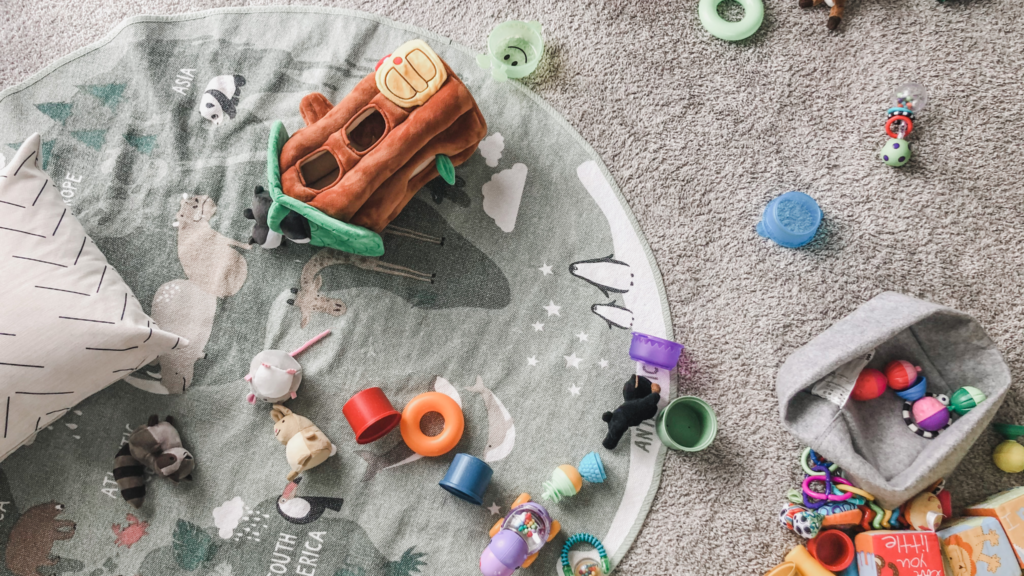
In August 2020, I gave birth to my boy/girl twins, entering the most unpredictable and exhausting period of my life. Fast forward 8 months to today, I’m still not an expert in raising children by any means, but I do know MUCH more than I first started out. This article is for me to acknowledge myself for the progress, and hopefully, this sharing can also help some first-time parents, especially parents of twins, to ease into the parenthood journey a little bit easier.
The following are a few key suggestions based on lessons I learned:
Before kids come out
1. Know your benefit for the maternity/paternity leave
I’m super lucky that my employer at the time offers 6 months of paid maternity leave, but if your employer doesn’t offer anything, your country/state/city might. Take Washington state for example, it offers up to 18 weeks of paid family leave. Note that this applies to both maternity and paternity leaves. I knew one couple. The Dad took this leave right after the Mom’s leave so that they can maximize their time spent with their little one.
2. Start some weight training early on
I’ve never had any significant muscle/tendon issues in my life, and I think I was reasonably fit and active. However, when my twins were around 6 months old (15 – 20 lbs), I started to develop symptoms of the so-called “Mommy Wrist” (De Quervain’s tenosynovitis). Basically, the tendons in my wrists became inflamed due to repeatedly carrying my babies. The worst moment was one time when the pain stopped me from using chopsticks properly. I ended up needing to go into the doctor’s office and got the steroid injection followed up with some physical therapy. This was not the end of the world, but in hindsight, I could probably skip this pain if I intentionally do some weight training early on to give my body some ramp-up time.
3. Learn the basics of how to sooth a baby
If you only have time for one video before your baby comes out, this is it — The Happiest Baby on the Block! It went through the “5s” research-based methods (Swaddle, Side, Shush, Swing, Suck) to calm a crying baby down. In my opinion, this is much more helpful than the theoretical “newborn class” offered by the hospital. I’m so glad that my coworker recommended this video and insisted that I watch it before the delivery. It helped tremendously for me to not panic dealing with two crying babies the first few times.
4. Prepare baby products in advance, but only the essentials
The truth is you don’t need every diaper bag, swing, or swaddle to survive. Plus, your baby may outright reject the product you pick for them. For example, I tried 5+ brands of baby carriers and ended up returning all of them, because my babies didn’t really enjoy any of them, and frankly speaking the idea of carrying two babies frequently post c-section was just too much for my body. Overall, I properly returned 30% of all the baby products I bought because they didn’t work out for various reasons. If I buy them too early, I wouldn’t be able to return them.
With that said, there are still some essential products that made our lives so much easier as parents of twins, which I list at the end of this article. Some products may seem pricey, but I was able to buy secondhand ones or resell them through apps like Facebook Marketplace.
After kids come out
5. Work as a team and take shifts
I was super lucky that my husband and my mom were in the position to help out 24/7 in the first few weeks, but still, the initial learning curve was quite steep for everybody. The first week was brutal! Everyone was extremely sleep-deprived and I also dealt with the c-section pain on top of that.
We quickly realized that we have to take turns in order to survive or otherwise nobody can rest! My husband ended up taking the morning shift (starting at 5 am) while I was still sleeping. I took the night shift (9 pm – 5 am) while he could go to bed early. Also, we assigned clear roles for everyone. I was in charge of most feedings. My husband was responsible for most diaper changes. My mom did the cooking (Asian postpartum meals, 月子餐) and fit in any gap.
6. Establish a routine that works for your family
The next day after giving birth to my twins, I was lying down on my bed in the hospital struggling to produce enough breast milk for my babies. A lactation consultant came in to help. To my surprise, she didn’t pressure me into establishing any “ideal routine”, but instead saying: “There’s no ideal way to take care of your baby. The best way is the way that works for your family.” This turned out to be one of the best pieces of advice I received.
After some trials and errors, we figured that the best way for our family is, feeding-wise, supplementing with formula from the get-go. I still pumped and breastfed occasionally, but I didn’t stress myself out because I didn’t meet the quota, treating it like a bonus. Schedule-wise, we reached an agreement to put kids to bed early, like 7 pm. Of course, they didn’t just fall asleep easily at the beginning, but when they did (around 3-4 months old), it was a life-changer! We finally regained some personal time at the end of each day.
7. Accept help from others
As a person who lives far away from home for almost a decade, I’m pretty used to doing almost everything myself. This thought also translates to taking care of my babies. Just like many first-time moms, I felt I can provide the most attentive care to my babies on everything as little as changing diapers.
However, very quickly I realized that I was attending a marathon with a sprint mindset, putting too much physical and mental stress on myself. I’m a human. I’m not perfect and I need rest. Plus, people around me are humans too who can give love to babies just as much as I do. It turned out that my babies didn’t get sick after hanging out at my in-laws for the whole day. They didn’t become less clean when my husband gave them a bath. They even paid attention to the virtual storytime hosted by my local library. More importantly, they actually gained richer experiences interacting with people other than me. As long as I hand over my babies to trusted people in a safe environment, it can be a win-win situation.
8. Focus on now, not just the future
Every parent wishes that their kids are healthy and happy, but the reality is — even if we try our best to create the most nurturing environment, there are still many things beyond our control.
A week after I broke the news to my social group about my 1-month-old newborns, my son was diagnosed with Pyloric Stenosis, an uncommon condition (0.5%) in infants whose muscles in the lower part of the stomach block food from entering the intestine. It was a medical emergency that required immediate surgery. Despite knowing that it’s likely curable, it still felt like the longest 30 minutes of my life when my husband and I sat in the small room in Seattle Children’s Hospital waiting for the surgery outcome after barely sleeping for two days.
During the 3-day hospital stay, we passed by many young children in the hallway who went through different kinds of surgery. Nobody planned to be there. I realized that there’s only so much in life that I can control. The more significant the things are (like health or economy), the more helpless we become. It’s helpful to plan ahead, but it’s just equally important to be ready to change the plan. Just like what Dr. Munakata suggested in this TED talk: “Appreciate how powerful the moments can be, because of what they mean for you and your child right now, not because what they mean for your child long term, which you do not know.” Every kid is unique and I need to allow their stories to unfold in their own way.
Essential products I recommend for twins
Twin Z pillow (Amazon)
This is so far the only way we can feed two babies at the same time! Without this pillow, we had to hold each baby separately during feeding time, which left us no time to do anything else. Even better, around 4 months old, they gradually learned how to feed themselves by holding the bottle on their own!
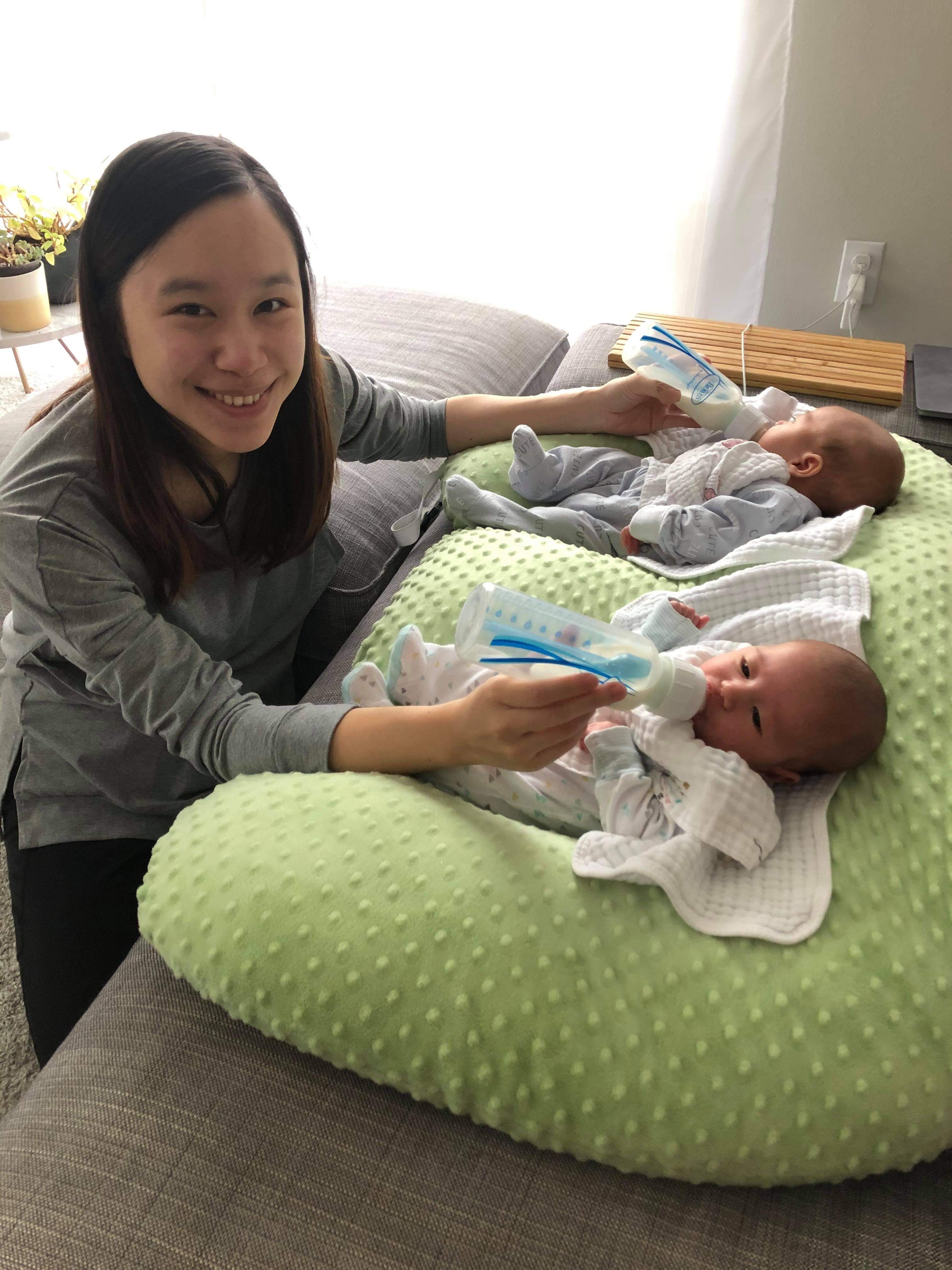
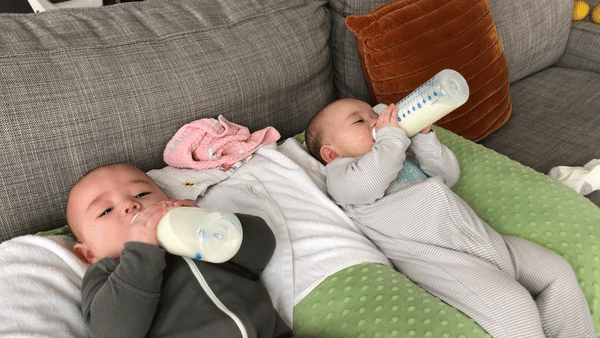
BabyBjörn Bouncer (Amazon)
This bouncer really helped to calm my babies down during the first few months. We bounced them to sleep all the time. It just magically worked. Even better, when my daughter was around 5 months old, she learned to bounce herself!
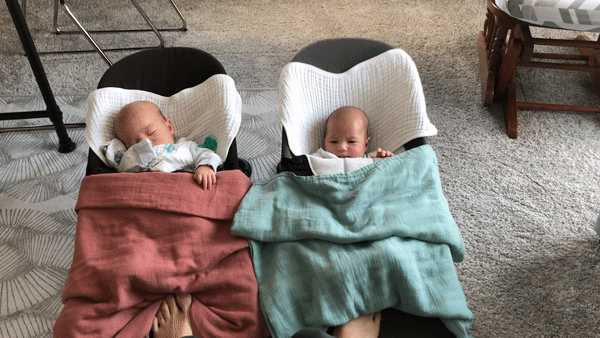
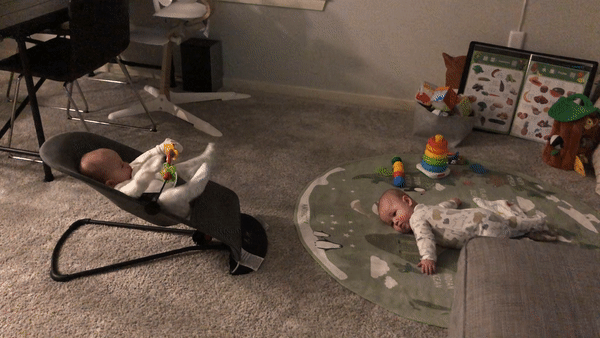
Baby Trend Universal Double Snap-N-Go Stroller Frame (Amazon)
After having twins, I was surprised to find out that there aren’t many options for double strollers with car seat compatibility. Most regular double strollers don’t take car seats and are only suitable for older babies (3+ months old). That’s why I was really glad to find this “universal” double stroller frame that is compatible with most big-brand car seats. Plus, it’s compact enough to fit into our Toyota Corolla!
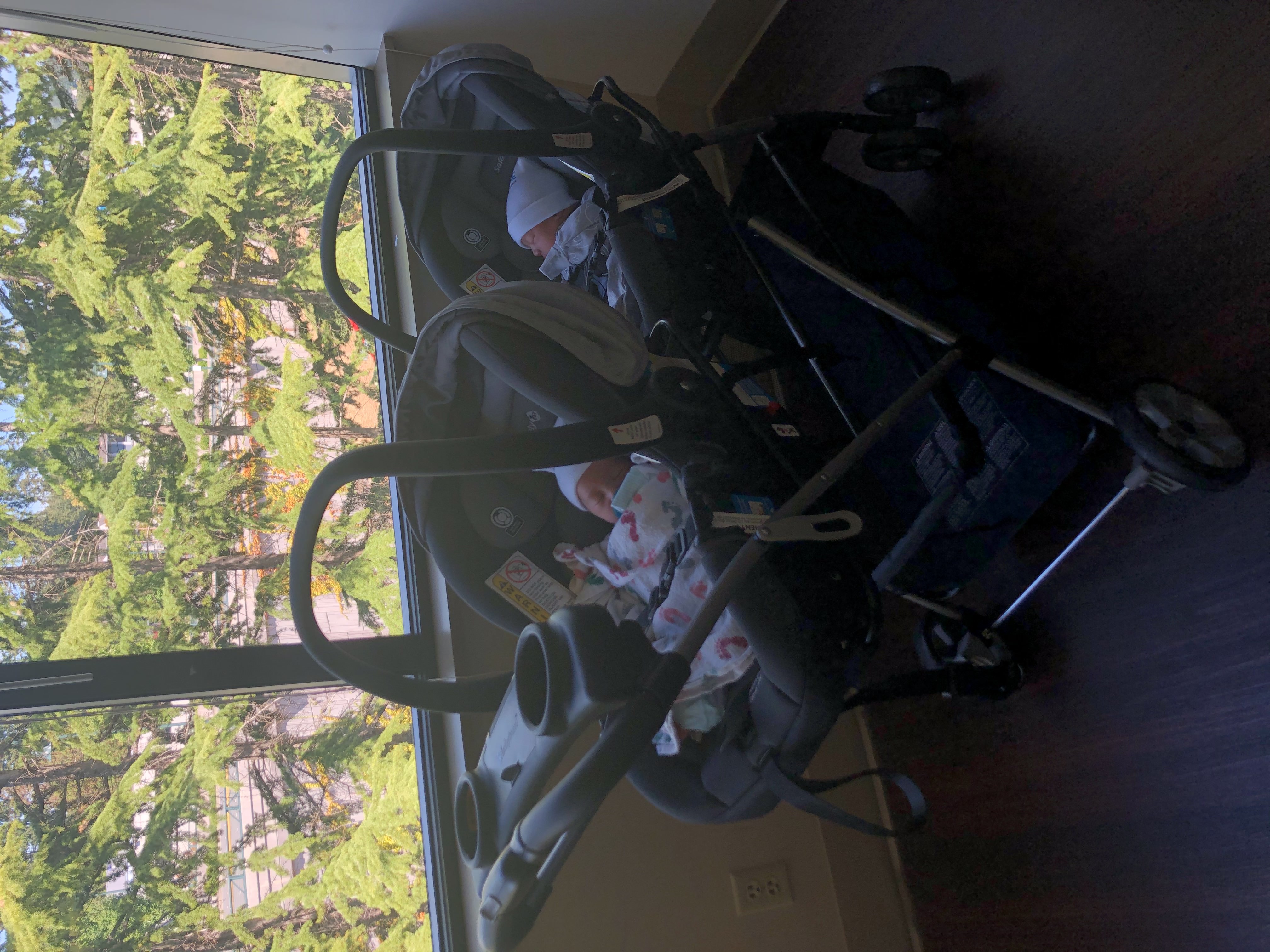
A standard-size crib
Ya, it’s just “a” crib (not plural) because my twins actually share the same IKEA crib for the first two months. I don’t have a recommendation for a particular brand as long as it’s the standard size because the smaller “mini crib” would only last about 3 months which I think is not worth it.
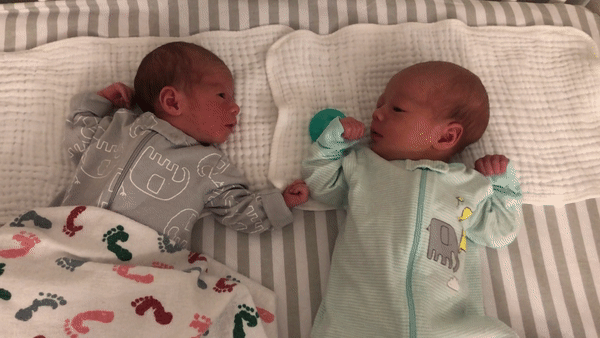
Baby Brezza Formula Pro Advanced Formula Dispenser Machine (Amazon)
This machine shortens the time of making a bottle from 5 mins to 5 seconds (including warming it up). Five mins may not sound too bad but it will feel like forever when your sleep-deprived body tries to make two bottles in the middle of the night for two crying babies.
Congrats Kaiting! They are adorable!!
Still can’t get over how adorable your twins are! You are a great mama and I am reading your article here to take notes for the future
As usual, congrats Kaiting!
From youtube to here, i have to say you are so great mom with two kids( twins), how old are they now?
My daughter is two years old now(only single child), and in the past two years, my wife and I so tired almost exhausted look after her and nothing “special”, she allergy to almost everything, i mean three meals for each single day.
We may meet in Google probably in the future.
Larry